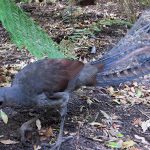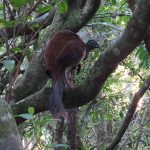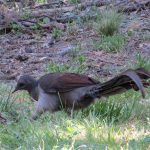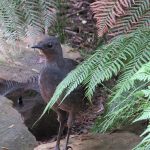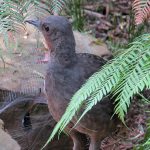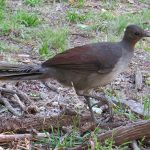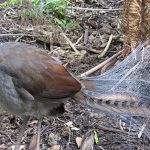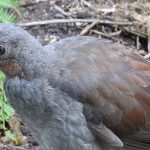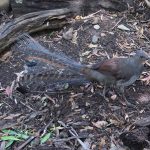LYREBIRDS
Lyrebirds are fascinating creatures and are considered one of the most iconic and unique bird species in Australia. They get their name from the elaborate tail of the male lyrebird, which resembles a lyre, a type of ancient stringed musical instrument.
There are two main species of lyrebirds: the Superb Lyrebird (Menura novaehollandiae) and the Albert’s Lyrebird (Menura alberti).
The Superb Lyrebird is more widespread and can be found along the east coast of Australia, from south-eastern Queensland to Victoria.
The Albert’s Lyrebird is found in a smaller area of rainforest in the border region between Queensland and New South Wales.
Lyrebirds are native to Australia and are known for their remarkable ability to mimic natural and artificial sounds, including other bird calls, human noises, and even mechanical sounds.. The syrinx is the vocal organ of birds, similar to the larynx in mammals. Lyrebirds have an unusually large and complex syrinx, which allows them to produce an extensive range of sounds and contribute to their remarkable mimicry abilities. They can imitate more than 20 different bird species and many other non-biological sounds.
Lyrebirds primarily inhabit dense forests and rainforests, where they forage on the forest floor for insects, small invertebrates, and some plant material.
During courtship displays, male lyrebirds use their splendid tail feathers to create impressive and intricate displays to attract females. They create elaborate dancing grounds, called “scratching courts,” on the forest floor. Here, they clear an area and decorate it with moss and other materials. The male then stands in the center of the court, fans out his magnificent tail feathers to form the shape of a lyre, and begins an intricate dance while singing and mimicking various sounds.
The female lyrebirds, on the other hand, have more subdued plumage and lack the ornate tail feathers.
Lyrebirds are omnivorous and have a varied diet. They primarily feed on insects, spiders, and other invertebrates found on the forest floor. They also consume fruits, seeds, and some small reptiles.
Despite their vocal talents and elaborate displays, lyrebirds are notoriously shy and elusive. They are mainly solitary birds and prefer to avoid human interaction, making them challenging to observe in the wild.
Both species of lyrebirds are listed as vulnerable due to habitat loss and predation by cats, dogs and foxes.
Lyrebirds have a relatively long lifespan for a bird, with some individuals living up to 20 years in the wild.
European settlers in Australia were amazed by the lyrebird’s abilities when they first encountered them. Their mimicry led to stories and legends among settlers about ghostly birds imitating lost traveller’s voices in the wilderness.

